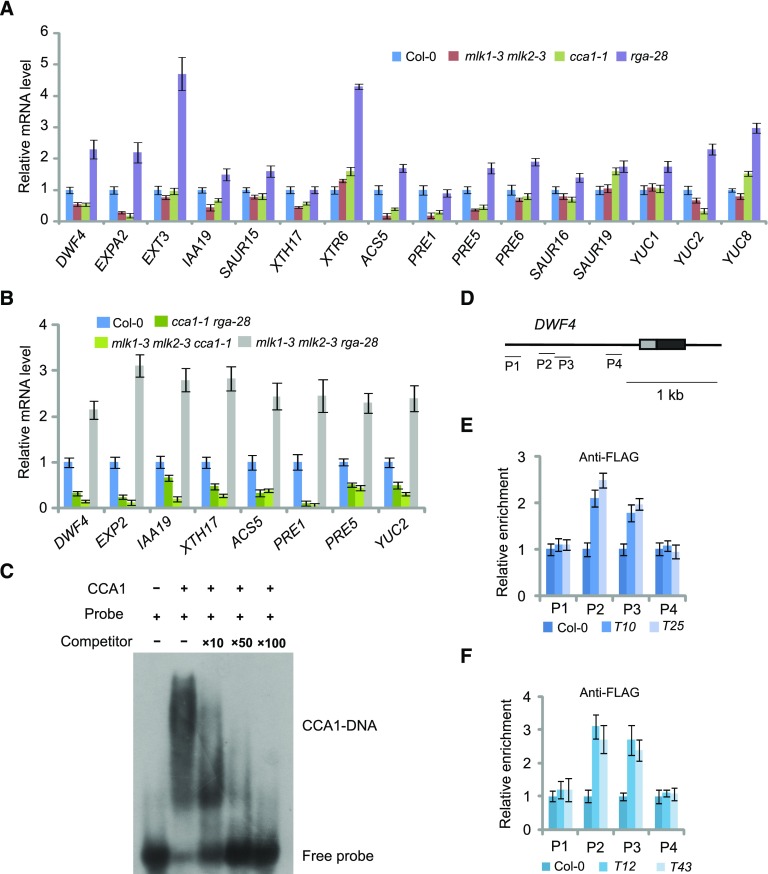Figure 7.
CCA1 Binds the Promoters of DWF4.
(A) Relative transcript levels of genes related to cell expansion were measured in Col-0, cca1-1, rga-28, and mlk1-3 mlk2-3 mutants. Experiments were repeated at least three times, and each experiment shown indicates the mean ± se, n = 3 replicates. The leaves was harvested at 2 h after lights-on zeitgeber time (ZT2) and used for RT-PCR.
(B) Relative transcript levels of genes related to cell expansion were measured in Col-0, cca1-1rga-28, mlk1-3 mlk2-3 cca1-1, and mlk1-3 mlk2-3 rga-28 plants. Experiments were repeated at least three times, and each experiment shown indicates the mean ± se, n = 3 replicates. The leaves were harvested at 2 h after lights-on zeitgeber time (ZT2) and used for RT-PCR.
(C) Gel shift assay with CCA1 and fragments of the DWF4 promoter region, respectively. The binding ability of CCA1 to fragments of the DWF4 promoter labeled with 32P was assessed, and this binding specificity was tested by adding unlabeled competitor probe.
(D) Diagram of the DWF4 promoter including untranslated regions (gray boxes), exons (black boxes), and introns (lines). The tested regions are marked with lines. The CCA1 binding sites are located between region P2 and P3.
(E) and (F) The relative enrichment of CCA1(E) and MLK2 (F) at the DWF4 promoter was assessed with ChIP-PCR. The cca1 complemented with ProCCA1:FLAG-CCA1 were indicated as T10 and T25, and mlk2 complementary plants (T12 and T43) are described in Supplemental Figure 2. Experiments were repeated at least three times, and each experiment shown indicates the mean ± se, n = 3 replicates. The leaf was cross-linked at 2 h after lights-on zeitgeber time (ZT2).

